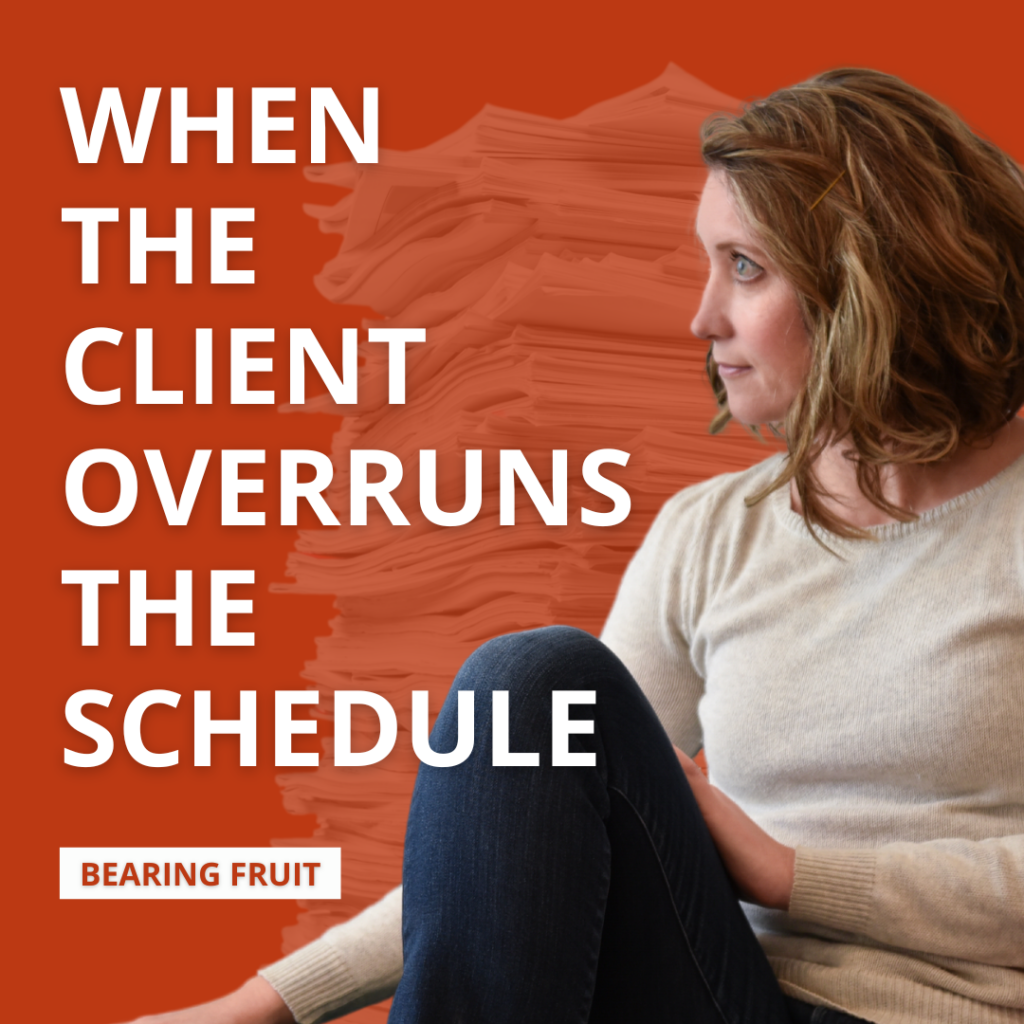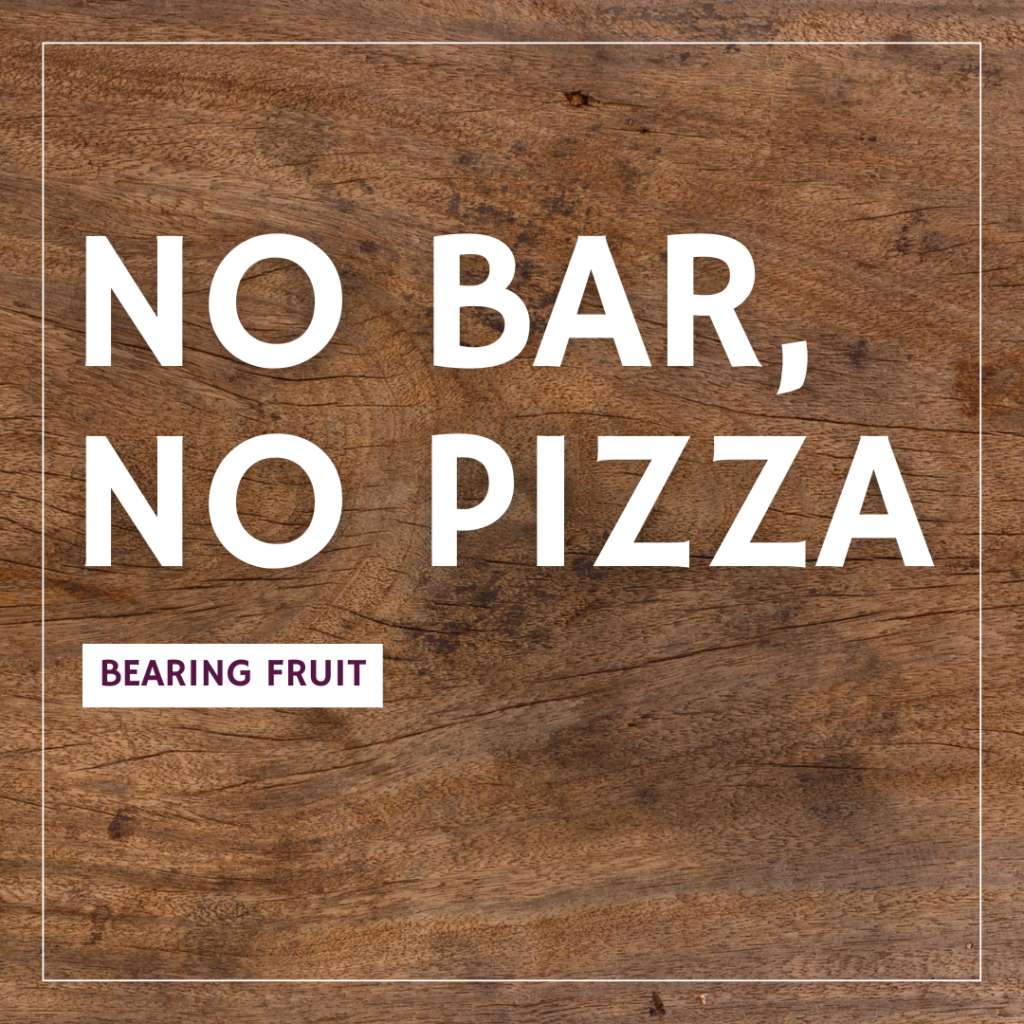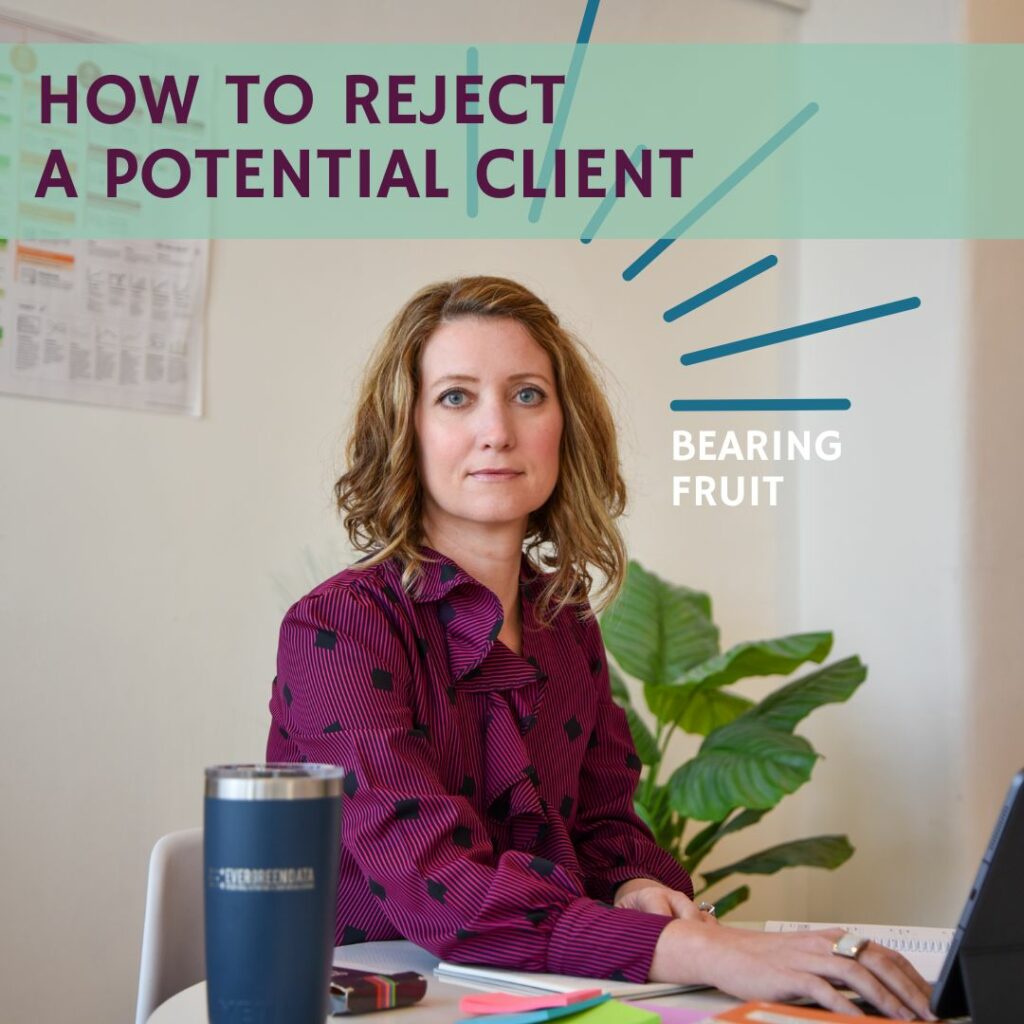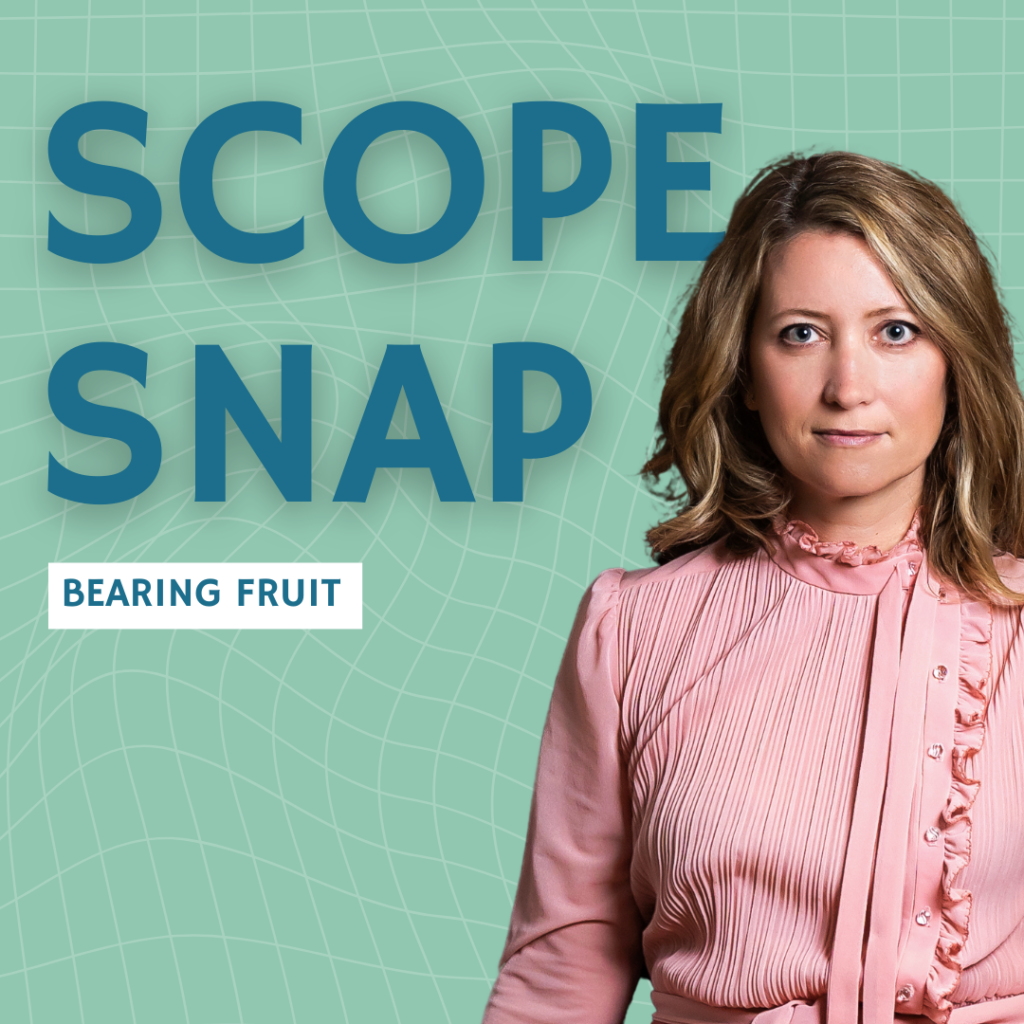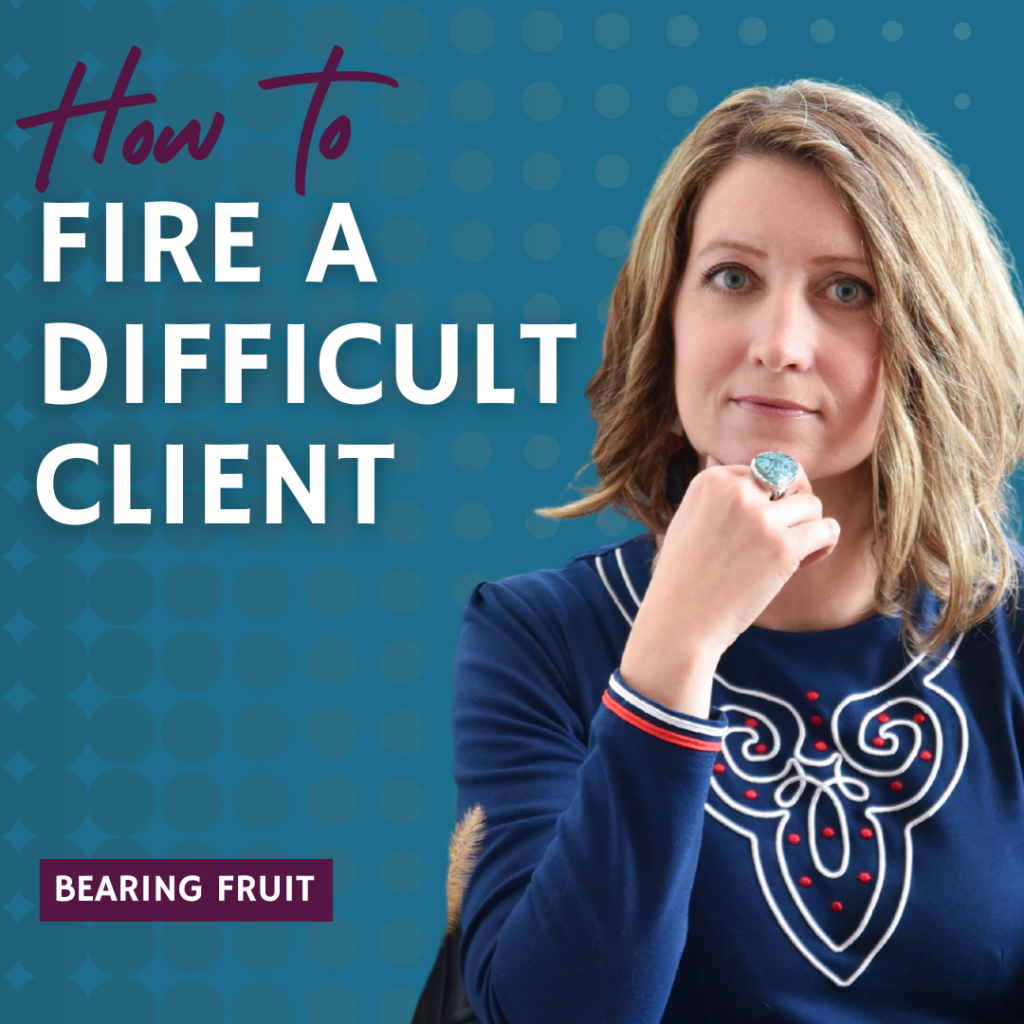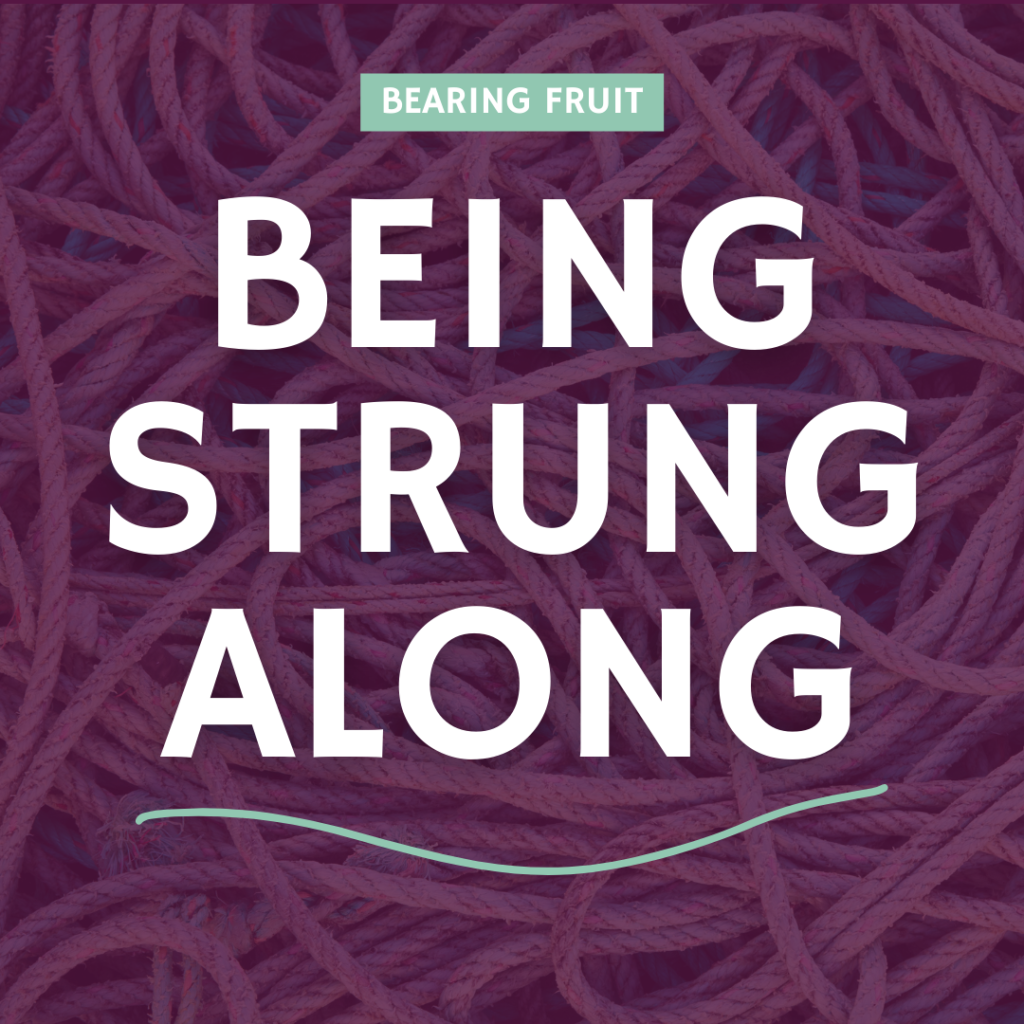When the Client Overruns the Schedule
Are we all in on the farce?
When you’re proposing a project and the prospective client wants deliverables attached to deadlines, does everyone know it’s pretty much bullshit?
I’m picking dates out of the clear blue sky. They’re as fictional as what the Jetsons thought the future looked like.
Because 95% of projects do not go according to plan. How could they? There are just so many unknowns.
Well, to be honest, the one thing I do know for sure is that the client will not get me feedback on the draft deliverables in a timely manner. It doesn’t matter who they are or how much I like them or how good the intentions are or how much we all want the project to succeed.
It just doesn’t happen.
I shouldn’t be so hyperbolic. I do get timely feedback once in a while – and it invariably comes with requests to undo things they previously asked me to do.
Either way, we will not meet the deadline.
Early Founder Stephanie was such a people pleaser that I’d let clients trample my boundaries and timelines and mental health. Old Me would have pulled some late nights and early mornings turning these large requests into miracles before the deadline.
Which we all knew was arbitrary in the first place.
How can we handle a schedule overrun while also maintaining our sanity?
When this happened last year, my team and I could see a schedule overrun early on.
Red Flag: If your project involves data collection. Even if that’s just a matter of scraping existing data from online sources. You will overrun the schedule.
Communicate early. I began telling the client “I need x by y date in order to stay on track for this project.”
Communicate often. Though they said they understood, they also blew past the dates I had put in place. Every single time. I changed my messaging to “We’ll do our best to get as far as possible in the time we have but I’m giving you a heads up right now that it’s likely we won’t make the deadline we stated in the contract.” I said a version of that so many times that it came as no surprise when the deadline was in the rearview mirror.
Then a wrecking ball hit our timeline: My point-of-contact took a new job. We switched horses mid-stream. New horse asked for us to undo things the last horse asked us to do. This set us back a month. My first two strategies to prevent an overrun were moot.
Communicate clearly. This is the point where my team and I could see that deadline was gonna crash into deadline and the whole project would spill over past the contract’s end date.
Option A was to stress out my team with demands to push harder and just make it happen. But who wants to live that life??
Option B was to work with the client to extend the end date on the contract and overlap the end of this project with the start of new projects we had on the horizon. In some cases, my team had, months earlier when the sky was bluer, told other clients they couldn’t begin work until another project (this one) ended and had promised start dates that were now looming. Extending this end date would still create a stressful scramble.
Ok there may be 23 more options but I chose Option C, which was “It’s no one’s fault in particular but we are unfortunately so far behind the schedule at this point that we won’t make our contract’s end date. My team and I have obligated time in our schedules through the end of the original contract period and we won’t be available after that date. We can work together to hand off the project to you to wrap up. If you still need our input, we can consult on an hourly basis starting in October.”
I mustered up my courage, did 10 jumping jacks, and hit send on that message.
They understood. They appreciated the plan for a hand-off. And they asked for an hourly contract to start in October.
Or, at least, that’s what the email said. For all I know, they were cursing my name back at their office. And it was that reaction I was actually afraid of. I didn’t want to make my clients mad at me.
Remnants of that old People Pleasing Stephanie were still kicking around.
The rational part of me knew that the clients were the ones who ignored the timeline. This wasn’t on me or my team. Yet that logic couldn’t quiet the fear of someone being mad at me. You can’t logic an emotion.
You know what worked?
When I realized that the choice was between taking the risk that my clients would be at me and being absolutely sure I would be mad at myself for allowing a stressful work culture that required multiple all nighters to make up for other people’s errors.
I’m still people pleasing. I’m just counting me and my team as people, too.
Saying Yes with Ama Nyame-Mensah
Ama Nyame-Mensah DMd me with a super juicy comment: I think I have some prospective clients who are breaking the No Assholes rule.
Let me back up: Ama is a student in the first cohort of my Boost & Bloom course for entrepreneurs and she knew that my three rules (passed to me from my mentors, who had it passed to them) are: Fun, Lucrative, No Assholes.
Let me back up further: Ama runs a company named Analytics Made Accessible (handily acronymed AMA – get it?). It’s a few years old now. Ama and AMA help people explore, analyze, and communicate their data more effectively, primarily by teaching folks to create compelling charts and share data stories that matter.
A company after my own heart.
And most of the time, I see young entrepreneurs so stressed about paying the bills that they’re saying yes to everything that even remotely looks like it could contribute to cash flow, even if the prospective client is kind of a jerk.
But not Ama.
Stephanie: Ama, you’ve clearly done the internal work to know your boundaries and to be able to spot a jerk from a mile away. What exactly is on your red flag list?
Ama: I will never forget a piece of advice my sister Akua —an Executive and Leadership Coach—shared with me a couple years ago: “If you say yes to everyone, you’re always saying no to yourself.”
Stephanie: I’m reading that again.
Ama: And she’s right.
When I first launched my business, I said yes to everything and everyone. I didn’t care who I worked with as long as I got my name out there and made money—bad idea. I was saying yes to projects that weren’t a good fit and clients who didn’t respect me.
The result: I was miserable.
Hustle culture tells us that overworking and accepting mistreatment from demanding clients are necessary to achieve success. Working with difficult clients who disrespect you and your boundaries and undervalue your expertise will ruin your business and wreak havoc on your financial and mental health.
Stephanie: Give us an example of client disrespect. I’m hoping others will read this and start to recognize when it’s happening to them.
Ama: I’ll share two flavors of disrespect.
Flavor #1: Not valuing my time.
I once had a prospective client reach out to me, looking for an external evaluator for a project.
I will not lie; I initially disregarded the message and sent it to my junk mail because I thought it was spam. But curiosity got the best of me, and I responded to the email, thanking them for sharing the opportunity and setting up a time to chat about the project.
Readers, I kid you not; over two months, this individual rescheduled on me FOUR DIFFERENT TIMES (including once right as we were supposed to log into our scheduled Zoom meeting)!
And if you’re wondering, we never connected about the project.
Then, three months after not connecting with this person, I got an email “thanking” me for my interest in the consultant position (huh?) and completing and submitting documentation (I never submitted any paperwork) …BUT they had decided to proceed with another party. (I got a good laugh out of that one.)
Looking back, the biggest mistake I made was going back and forth, sending multiple Zoom links to a prospective client who was never interested in working with me.
Life happens, meetings get moved, deadlines get shifted, etc. And I cannot penalize someone simply because they’re late…once (maybe twice). But when someone repeatedly reschedules, postpones, or does not show up before becoming a client, you can guarantee they will do the same once you start working with them.
Bottom line: Don’t work with people who do not respect you or your time.
Flavor #2: Rude and unkind.
A couple of years ago, someone approached me to lead a potential project their team had been kicking around. They were attached to a cool group, so I was excited about collaborating with them. So much so that I let a lot of things slide that I shouldn’t have.
By the time I realized something was very off, I had already done several months of free work with no contract in place. But I thought: No worries; we had talked about them paying me for the work I had done to shape the project upfront after pushing the paperwork through.
Readers, that never happened.
When the paperwork was almost complete, everything fell apart. The organization spontaneously came up with a new deposit policy, which they promptly blamed on legal. And when I reached out to have a conversation with my point of contact, the conversation went horribly, horribly wrong.
What I hoped would be a moment for us to come to an understanding about my boundaries and a reiteration of what we had previously agreed to devolved into a weird conversation where they casually dropped that I should be grateful that they would even consider working with me on a project like this.
Rude much?
Remember, you are a business owner. You do a job, get paid, and the cycle continues. (That’s not to say you cannot forge long-lasting, mutually beneficial relationships with your clients.)
But some folks will make you think they are doing you a favor by working with you, even though it’s work they want (and usually need) done. Clients you partner/work with are not doing you a favor. There is no “favor” in business. People value what they pay for, and they pay for what they value.
Bottom line: Don’t work with unkind people.
And Stephanie’s bottom line: No spec work! No work before the contract!!
Now that I’ve been burned a few times, I know to look for these positive signs that someone (or an organization) will be a good partner:
- Collaborative: At the heart of any successful collaboration are communication and transparency. I am always excited by open-minded clients interested in working together to experiment and discover what works and what does not. Data + Design work is iterative, so partnering with folks open to hearing and giving feedback is key.
- Kindness: To some, respect can be bought. For example, if a client is purchasing your services, you (the consultant/entrepreneur) have to respect them while they can treat you (and their staff!) however they please. When I talk with prospective clients, I watch (and listen!) to how they interact with each other and me. People who treat others with respect and kindness are more likely to treat you with respect and kindness.
- Follow-through: Anyone can talk a good talk. But good prospective clients walk the walk. Verbal commitments are great, but they mean nothing without consistent action. This is where follow-through comes in. Follow-through is the key to creating trust in a new relationship. It lets people know you are serious and that you value their time. Follow-through at the beginning of a client relationship can be as simple as honoring meeting end times or demonstrating a commitment to a project by sharing a project description or proposed budget.
Knowing how you want to run your business, the types of clients you want to partner with, your values, and being comfortable communicating your expectations and boundaries will make you a happier entrepreneur.
What would you add to your Yes List? Tell Ama!
Ethical Riders
“We met as a group and have decided we’d like the dashboard’s graphs to be red if the metric is trending bad and green if the metric is trending in the right direction.”
Ok, what would you do here?
Because the client is asking for a change that would make the work inaccessible to people who are red-green colorblind.
Just do it because they are paying you?
Push back?
I pushed back. Here’s what I said:
I strongly advise against this. You told me during our initial conversations that a key tenet of your [name-drop-worthy] foundation is equity. Choosing red/green makes you inequitable. Like I recommended in my initial sketches of the dashboard, let’s use orange and blue instead. Need another reason? Your logo is red. So assigning red to the bad data would conflate “bad” with YOU. Don’t do this. You hired me to give you the best possible advice and that’s my advice.
Dear Reader, they pushed back on my push back. They told me to do it anyway.
And that’s when I wish I could’ve quit the project.
Because now we were consigned to create something I would never be able to share. What good is having a name-drop-worthy client if you’re so embarrassed by them that you’d never drop the name?
I was venting about this on a call with my Boost & Bloom students (to show that even seasoned entrepreneurs can have things turn sour) when one of them asked me:
Could you put ethical riders in your contract?
Holy crap.
Yes.
Of course I can.
You can put anything you want in your contract. (Granted your prospective client may retreat from the engagement – but you’d have your dignity intact.)
Until now, I’ve really only thought of ethical riders when it comes to speaking panels.
After I screamed into the internet about manels in data visualization, I wrote up an inclusion rider that stipulates that my role in the conference is contingent on the requirement that other featured speakers and panelists are proportionately representative of United States (or wherever this is taking place) demographics, meaning approximately 50% women, 50% people of color, 20% people with disabilities and 5% LGBTQ. I can cancel at any time with no notice if this stipulation is not met.
Inclusion riders are a way for people with privilege to open up space for those who have been traditionally overlooked.
This notion of an inclusion rider came to my attention through the Annenberg Inclusion Initiative, where they work with actors to include such riders in their contracts, laying out the expectation that, collectively, cast and crew need to be an accurate reflection of society. They even provide a contractual template.
Employment contracts can contain morality clauses that say you can be fired with cause for engaging in acts that damage the company’s image or reputation.
With these specific models already laid out for us, I’m curious what it could look like to apply the same idea more broadly so that I’m not committed to begrudgingly making this inaccessible dashboard.
I’ve got a great attorney who can surely help craft the right language. But she’s going to ask me how we’ll define “ethics” – just in the same way that those morality clauses have to spell out precisely what acts violate company morals, with specific examples. And this can be especially tricky in areas like accessibility, where the possibilities are rapidly expanding.
But let’s not allow the trickiness to keep us from even trying.
The integrity of aligning our work to our values is too important to give up just because it sounds like it’ll be hard.
As is so often the case, we often learn we have boundaries after they’ve been violated. So, given your hindsight, what specific examples would you want to see included in ethical riders for data visualization? Email me with a nomination.
No Bar, No Pizza
Summer 2023 I was one of the swarms of Americans who knocked around Italy for vacation.
Venice, though beautiful, was shoulder to shoulder with tourists. It felt like being in the world’s loveliest but most popular nightclub. If there could be fire codes on sidewalks, Venice would have set off alarm bells.
That’s why No Bar, No Pizza impressed me so much.

Trattoria al Vagon is a well-regarded restaurant, right on a canal, serving traditional Venetian food. It’s the kind of place where you need a reservation for dinner.
But they’re also on a main thoroughfare with throngs of people shuffling by shoulder-to-shoulder throughout the day. If you’re thinking profitably, it would make sense to open earlier in the day. Even all day, since these tourists are jet-lagged and their stomachs don’t know what time it is.
So they compromised a smidge and extended the hours to attract the pockets of people walking by.
And then swiftly realized these tourists have no taste.
All they want is pizza and an aperol spritz at 10am.
Would you appease this clientele even further and install a pizza oven and a bar?
It would mean more capital investment.
It would also mean compromising your quality, your reputation, your ethics – that much more.
They said no.
And posted a handmade sign in large, all caps, English language letters: No Bar, No Pizza.
Don’t even come sit down and waste our staff time if that’s what you seek. There are 100 other restaurants within spitting distance that can meet you exactly where you are.
That’s called boundaries.
Every business needs boundaries – a clear delineation between what you will and won’t do.
You need them because you were likely raised to be a people pleaser so it’s engrained into your personality to bend over backwards for every person who knocks at your door, even if it causes you back pain. And exhaustion. And resentment.
Your best path forward – the path that saves you time and sanity – is the one where you get clear about your boundaries and then communicate them very early on in the process so potential customers can self-select out if their needs don’t match your services.
You need a wooden sign that says No Bar, No Pizza.
I write my boundaries down, because otherwise I’m likely to forget that I made them. That’s how I navigated through a recent situation where a potential client asked me to teach Power BI workshops for beginners, intermediates, and advanced students.
For a day I deliberated.
Then I remembered that I’d have to stretch myself to teach those workshops and they’re technically outside of my wheelhouse. I remembered my boundaries. And I referred this potential client to a colleague.
Boundaries are how I knew how to respond to a potential client who was pressing me to schedule a workshop before the end of the year, even though I’d already told them I have no availability.
Could I have found a way to squeeze them in? Sure.
But it would have hurt. There’s a reason I already put a boundary in place about no more work this year.
So, my friend, what’s a boundary you need to put in place to protect your time, energy, and mental health? Write me with your version of No Bar, No Pizza.
How to Reject a Potential Client
“How do I say no to a potential client? And how do I tell that it should be a no?”
– A Bearing Fruit reader
How to Tell It’s a No
Speaking just for myself, it’s an easy no if the request is outside of my wheelhouse or my availability.
But if it is aligned with my skills and mission AND I have the space in my schedule, I then check that the project fits these three criteria: fun, lucrative, and no assholes.
You have to make up your own criteria, of course. Just like you had in your dating days, you need a red flag list for clients.
But also, it might just feel bad. Like, the project or the client isn’t ringing any specific alarm bells but your heart or your gut is just saying no. That’s perfectly fine. Trust your spidey sense.
How to Actually Say No
Ah yes, the hard part. The reason this is hard is because you have to be honest – without oversharing.
If you say “I’m all booked up!” you may experience exactly what happened to me (as described in this fun podcast episode) – the potential client (who was an asshole) wrote me back to ask when I’d be free.
Saying no after that is extremely awkward – so much so that if you have any people-pleasing tendencies whatsoever, you’re likely to say “in two weeks” and now you’ve got yourself an asshole client.
On an Office Hours call with my Boost & Bloom students, someone with a very well-established business (you’ll notice I don’t name names of my students or my readers – we follow The Chatham House Rule) gave the best answer “We’re not a good fit.”
This is the best reply because it’s hard to argue. The trick is to stop there. Don’t start explaining WHY you aren’t a good fit. People socialized female will especially feel compelled to make the other person comfortable, so we’ll justify the mis-fit. But the more you talk, the more you leave yourself open to be countered.
If you feel you must, you could provide a recommendation. But that’s not a requirement. You aren’t a match-making service.
You can just type “Thanks so much for reaching out. This project isn’t a good fit for my company. Best of luck in your pursuits.” Hit send and go about your day.
If they write back, don’t panic – smile. It’s great! Because it’s validating your initial assessment: People who push back against a no are assholes.
Do not reply. Delete without guilt. People show you who they are. Listen and act accordingly.
This may be one of the shortest Bearing Fruit newsletter editions because the answer is brief. It’s the emotional effort to get to that brief answer that takes time to work through.
Scope Snap
I know you’ve heard of scope creep – when your client asks you to do a little more here and a little more there until you’re basically running a second project for the cost of one. But let me introduce you to a new term (for maybe a familiar experience): scope snap.
This is how scope snap happens:
A well-intentioned client asks you to join onto a grant they’re writing. Your name, reputation, and skill set will add strength to their proposal.
You really like the idea of a few years of guaranteed funding and the proposed project fits your mission. So you develop a semi-detailed plan for how your part of the project would go.
In my case, it was data visualization skill-building workshops (my sweet spot) for teachers (my people) who focus on culture-based curriculum (hell yes) and want to tell the story of student progress outside of test scores (yes please) and work in a primo island vacation destination (yall I just don’t know how it gets any better for your girl Stephanie).
I had the work plan drawn up by the end of the day.
The first red flag I should have seen was when the client asked for even more: workshops on data collection (uh oh, not really my area) and identification of appropriate metrics (outside my wheelhouse). You might have “scope creep” sirens blaring in your brain. But they had dollar amounts attached to these additional asks.
Plus I said no. That’s not what I’m best at. If those are requirements, I can refer you to someone else to replace me.
(That’s one way to handle scope creep, if it comes up in the getting-to-know-you stage.)
We negotiated a bit more, finalized my part of the proposal, and then waited a bazillion years to hear back from the funding agency. And then a fazillion years to actually get the money so we could start.
And it was at that moment, a bazillion-fazillion years later, when the scope snap happened.
The amount of money my client got was not equal to the amount they’d requested. So my client had no choice but to review the proposed plans, compare it to the funds available, and start snapping scopes.
Has this ever happened to you?
Rather than capacity-building workshops teaching teachers how to be empowered with data, my client wanted me to switch lanes and design dashboards for 3 schools.
The thing is, I don’t really enjoy design work. I’m happiest when I have zero design clients. I accept just a few design projects per year and I’m extremely choosy. They don’t have the same life-changing power as my workshops do. (And design, by the by, is a fully remote activity.)
Had I known this was going to be a design project, I would have declined from the start.
This scope snap gave me whiplash.
The second big red flag danced in my face like one of those purple inflatable people outside the quickie oil change place.
So what would you do in this situation?
Options:
🧐 Be grateful for the work. Even if it’s work you don’t enjoy. Unenjoyable work is part of life. Right?
🧐 Be ungrateful for the work but stay focused on their alignment with your social justice mission and do it for the cause.
🧐 Politely decline the scope snap and refer a colleague.
🧐 Impolitely decline the scope snap and rage. Burn the bridge.
When we’re coming from a place of insecurity, when imposter syndrome is ever present, we usually only see Option 1. We don’t even know we’ve got other possibilities.
I chose Option 2. I grumbled under my breath a little but shifted my focus to my heart, which loved the overarching purpose of the project.
It worked for about a year.
The reason it fell apart was not because the mission changed or my heart turned.
The reason was actually far more obvious.
Those first two big red flags weren’t the last two big red flags. After all, that’s what reg flags are: Signs and symptoms of larger underlying dysfunction that’s gonna come bite you in the tushy at some point.
What was originally a mid-six-figure project over a few years snapped into a five-figure project that lasted one year.
Good thing I didn’t let dollar signs get stuck in my eyeballs and buy a second house in Portugal with a giant mortgage.
You’ve heard the phrase Don’t count your chickens before they’re hatched?
Yep, but in this case it’s Don’t count your checks before they’re cashed.
In hindsight, I’m sad for the year I spent trying to make it work. The hours and hours I sunk into revising and re-revising the proposed scope of work so it fit into the snapped budget. The endless Zooms.
It’s hard to learn to spot a red flag. It’s even harder to figure out whether it’s a blip or warning siren. (Everyone has blips. I blip every day. I can absolutely look past a blip.)
I’m still working on that discernment.
Here’s the lesson I’ve skimmed from this so far:
The two red flags I saw early on were both instances where the client was trying to get me to agree to work I don’t really do. A classic square-peg-round-hole situation. At this point in my life, I’ve accepted the fact I’m a square.
The next time a scope snap happens, I plan to lean toward being ok with it, as long as it still lets me be a square. When I feel like someone is trying to shave off my corners, I’m gonna say no.
I know you’ve had a scope snap, too. How did you handle it? Email me.
How to Fire a Difficult Client
The first time I had to fire a difficult client, my pits sweated right through my shirt as I was composing, backspacing, and rewording that email.
Look, we’re gonna to do our best to make sure we don’t ever end up in this position, but sometimes you have to fire a difficult client.
I encourage you to do this at the second sign of inappropriate behavior. For the most part, I’ll give people grace on their first asshole comment, late payment, or questionable Zoom background.
But the second time?
Cut your losses and get out.
You don’t necessarily even need to have a clear egregious error. Sometimes you just drift apart. You’ve got a 5 year contract and 2 years in you’ve decided you want to shift your business focus.
Instead of providing a full suite of graphic design services, you’re pivoting into the niche of writing each wedding guest’s name in calligraphy on individual grains of rice that they’ll chuck at the happy couple. Totally cool.
Pivots happen all the time.
The bottom line is don’t do this:
Even if you really really really want to.
When you recognize it’s time to part ways your first stop is your contract. Whip that baby out.
It’s gonna have a section on cancellation. The most common clause I see says that the contract can be cancelled by either party with 30 days’ notice.
Ok, cool.
Email your client and say… whatever you want. But not too much. Unless you want to.
Crystal clear?
My point is you aren’t obligated to say much but if you’ve had a good relationship and want to preserve it, you can provide some detail.
How to fire a difficult client:
You can be as efficient as “Hey there – It breaks my heart to do this but I need to sever our partnership. Our contract asks for 30 days’ notice – please consider this the notice. I’ll continue to give my best on this project in that time and I have someone in mind I’d like to transition you to if you want a recommendation.”
You don’t have to mention calligraphy on wedding rice.
You also don’t need to provide a recommendation if your client is a jerk. Because the colleague you’re recommending doesn’t deserve that behavior either.
If they’ve specifically breached the contract in some way, you don’t have to wait the 30 days either. You just need to point to that clause in the contract, like “Todd, when you commented on the size of my butt at last week’s meeting, it was a breach of the sexual harassment clause of the contract, which is cause for immediate cancellation. I’ll be sending my final invoice over shortly.”
I’ve been in less clear situations where I had to say something like “The ongoing reshuffling of my scope and responsibilities is making it impossible for me to fulfill the obligations laid out in our contract. Further, I need to be able to trust a partnership – that’s how we plan out our business strategy. This partnership is not working for our business model any more.”
Copy/paste these as much as you need.
Take a deep breath and hit send.
And if you’ve loved these folks, consider shipping them a parting gift of wedding rice.
Do not forget to send the final invoice.
Sometimes we don’t review our contracts very carefully before signing and end up agreeing to a clause that’s less fair, like one that says only your client is allowed to cancel. If that’s you, still try one of these options listed above. Chances are that once you convey that you’re unhappy, they’ll also want to part ways.
If you’re screening your prospective clients well, firing a difficult client will be rare (so bookmark this page for when you need it). I have to do it once every other year.
When it happens to you, it sucks but I’m here for ya. Email me and tell me what happened and how they reacted. We’ll get through it together.
Business Boundaries
I live a couple blocks from the world’s best pizzeria. I count it among my many blessings. The owner, Rich, has perfected red sauce. He hires neighborhood kids. He’ll donate a dozen pies to any local charity that asks.
So why does he have reviews like this, from Lauren C who lives in the “theater district” in Manhattan:
“I have never been treated so poorly by the owner of a restaurant or any employee. I will never be back and recommend you avoid this restaurant at all cost.
“The food does not compensate for the horrible attitude and hostility of a mean man.”
I have a pretty good guess, because here’s what happened to me, many moons ago.
I asked for my salad dressing on the side. My server said, “I can give you no dressing. I can give you a ~whisper~ of dressing. But I can’t put your dressing on the side.”
Um what? I’m feeling kinda Lauren C right now.
My server explained that the chef carefully constructs each dish, which is meant to be consumed as a whole, not as individual parts. It’s like a piece of art. You wouldn’t ask an artist to put all the yellow in a pot on the side of the painting.
In other words, this restaurant has integrity. They know their food is amazing. They know what makes it amazing. And they don’t mess with the magic.
That’s called having boundaries (and I suspect Lauren C isn’t used to facing boundaries).
Boundaries are how you maintain the integrity of your work.
Most of us don’t even consider business boundaries. That’s how we get scope creep and asshole clients.
You can recognize missing boundaries when you put together a proposal for a client and the client comes back with a list of tweaks they want to make to your package and you say yes.
You say yes because you want the money and the client and the opportunity. What you trade for the yes is the integrity of your plan.
The thoughtfulness and experience you put into the creation of a package of services that you know will serve this client the best.
You lose your voice of wisdom – which, as a consultant, is one of your most valuable assets. It’s why you attracted this client in the first place.
How successful will this project really be if your voice of wisdom can be pushed back and questioned?
Of course – partnership is important and that will always require some discussion and collaboration and the lovely unfolding of new ideas. It’s your job to recognize when your client is treading into your area of expertise and crossing a boundary.
When you let your boundaries get crossed, you’re not a consultant, you’re a freelancer.
Rich’s expertise is Italian food. Lauren C’s expertise is not Italian food. Rich has every single right – and I would even say *responsibility* – as the expert to say what can and cannot be changed to maintain the integrity of his food.
And so do you.
Granted, Rich is a white dude, which comes with a level of privilege that likely makes it easier for him to tell a customer no, to risk a bad review on Yelp.
But Rich can also bet on the fact that his work is so flippin good that all of the 5 star reviews saying this is the best pizza on the planet will overshadow the Lauren Cs of the world.
And so can you.
Focus on constructing amazing packages for your services. Produce extraordinary results for clients. And your reputation takes care of itself.
Business boundaries start like this:
I don’t….
We only…
Our focus is on…
My policy is…
Finish one of these sentences and email me with your business boundary.
Being Strung Along
The thing about being strung along by a “potential client” is that you often don’t know it til it’s too late. Let’s look at what happened to a couple of my students and let their hindsight become your foresight.
No work without a contract.
Sometimes we make it easy to string us along. Like when we agree to work we wouldn’t normally do, for the promise of a future contract.
One of my previous mentees (let’s call her Trudy) accidentally set herself up for being strung along. She realllllllllly wanted to partner with this organization. It woulda been a big fish to add to her portfolio.
In her early conversations with her point of contact at this org, they seemed super eager to work together. So much so, that the client asked Trudy if she’d be willing to jump in on some small tasks (warning sign #1) at a low (warning sign #2) hourly rate (warning sign #3).
Trudy didn’t know me then, so she said yes. The client said it would just be temporary while they write up the bigger contract and get it in place.
Did Trudy ever advance beyond low wage task labor?
No my friend she did not.
And she was too embarrassed about the scope of her work there to ever include this client in her portfolio.
The client doesn’t know what they want.
Another student of mine (code name: Blanche) got stuck in a months-long string-along with a potential client because of “decision by committee.”
Similar to having too many cooks in the kitchen, decision by committee is an excellent way of slowing progress to a casual stroll through I Don’t Know What Do You Think Land. Have you and your partner ever entered into starvation because neither of you could decide what you wanted to eat for dinner? Like that. But with ten partners.
Blanche had a typical initial meeting with this client to lay out the possible solutions she could offer to the problems they were experiencing. They seemed to have come to agreement about the way forward. Blanche went home and waited for a contract.
And waited.
Blanche checked in but by this point, the finer details of the conversation had been lost, so the potential client asked Blanche to write up the plan in a proposal (note to Future Blanche: Write and send the proposal immediately after the initial meeting.)
Blanche sent the proposal and waited.
And waited.
When she checked in again, the potential client said the team needed to really think about whether the proposed solution would solve the right problem. Could Blanche meet with the whole team and help them talk through their problems?
I’m gonna skip to the end of Blanche’s tale: Blanche dealt with so much waffling you’d think she could open an IHOP franchise. This client liked the idea of working with Blanche (or, at least, of having a consultant) but couldn’t ever make a decision about where to start.
I actually suspect they didn’t have the funds to invest in the right solutions but didn’t want to say that to Blanche’s face, so they just let it playyyyyyy out.
Look, some clients really do take months of nurture before the project comes to fruition and you get that sweet contract in your hands. You’ve gotta relationship build. They’ve gotta convince some team members to swipe right on you. Procurement processes and vendor onboarding – the creepy evil twins staring at you blankly at the end of the hallway of consulting life – can take a long, long time.
You’ve gotta learn how to tell the difference between when they really do need time and when they’re stringing you along. Here’s how I tell:
Check-ins should advance the plot.
If you’re not hearing a reply after you send a check-in email, wait a week and send another. We all have those weeks from hell where we can barely breathe. But if you don’t hear anything after the second check-in, move on with your life.
When you do get a reply, it should include some decision or action or next step with a date attached to it.
Like “My team and I have a meeting to discuss this project next Tuesday and I’ll get back to you then.”
or “I have a few more questions. Can we schedule a Zoom to discuss?”
These are check-ins that advance the plot.
If your check-in gets a reply like “Thank you for checking in!” or “We’re still thinking about it.” you’re being strung along and it’s time to walk on by.

